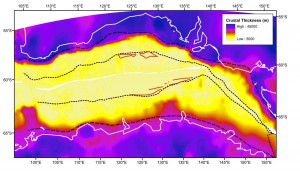 Despite decades of study the pre-rift configuration and early rifting history between Australia and Antarctica is not well established. The plate boundary system during the Cretaceous includes the evolving Kerguelen-Broken Ridge Large Igneous Province in the west as well as the conjugate passive and transform margin segments of the Australian and Antarctic continents. … Read more…
Despite decades of study the pre-rift configuration and early rifting history between Australia and Antarctica is not well established. The plate boundary system during the Cretaceous includes the evolving Kerguelen-Broken Ridge Large Igneous Province in the west as well as the conjugate passive and transform margin segments of the Australian and Antarctic continents. … Read more…
GPlates 1.0 now available to download
GPlates 1.0 has been released! Click here to download the latest version of GPlates
